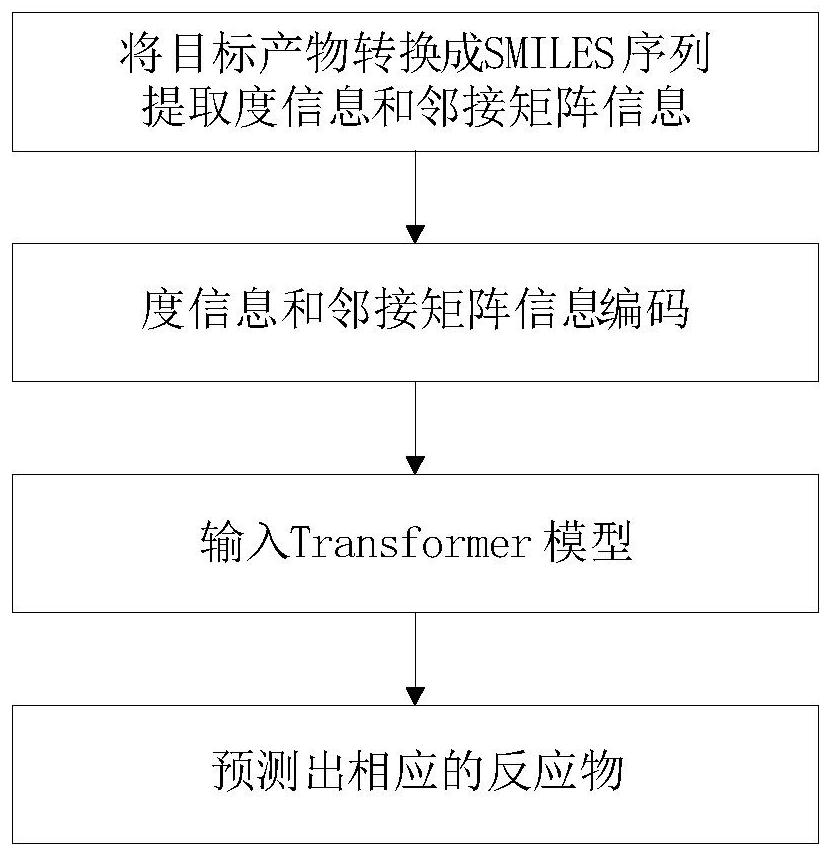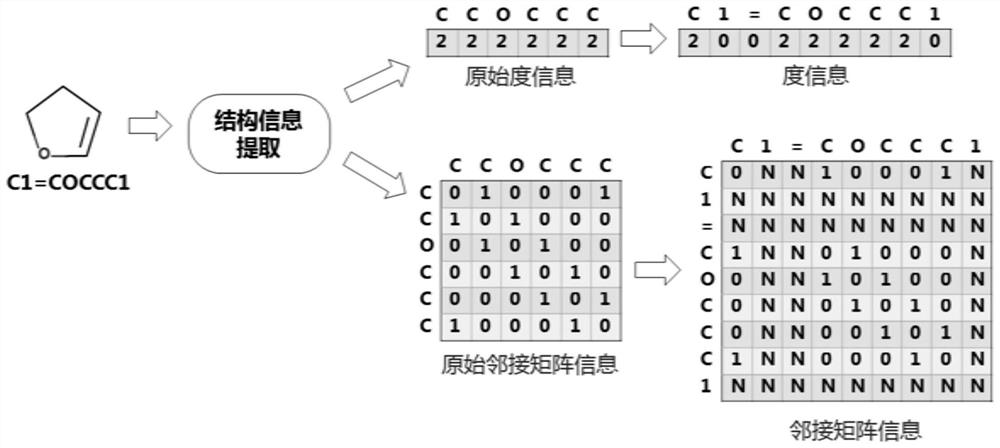Deep learning-based inverse synthesis prediction method and device, medium and equipment
A technology of synthesis prediction and deep learning, applied in chemical property prediction, chemical machine learning, chemical statistics, etc., can solve the problem that SMILES sequence cannot fully consider molecular structure information, and achieve the effect of improving accuracy
- Summary
- Abstract
- Description
- Claims
- Application Information
AI Technical Summary
Problems solved by technology
Method used
Image
Examples
Embodiment 1
[0039]At present, most retrosynthesis prediction methods based on sequence-to-sequence models only consider the SMILES sequence information of molecules, and lack the consideration of molecular structure information, which is very important in the chemical reaction process. Aiming at the problem that the SMILES sequence in the retrosynthesis prediction method based on the sequence-to-sequence model cannot fully consider the structural information of the molecule.
[0040] This example proposes a retrosynthetic prediction method based on deep learning. By embedding molecular structure information into the Transformer model, it solves the problems existing in SMILES sequence representation and improves the accuracy of retrosynthetic prediction results. The principle is as follows figure 1 shown.
[0041] The retrosynthetic prediction method includes the following steps, such as figure 2 Shown:
[0042] In step S1, the target product is converted into the corresponding SMILES ...
Embodiment 2
[0068] This embodiment is a storage medium, wherein the storage medium stores a computer program, and when the computer program is executed by a processor, the processor executes the inverse synthesis prediction method based on deep learning described in Embodiment 1.
Embodiment 3
[0070] In this embodiment, a computing device includes a processor and a memory for storing a program executable by the processor. When the processor executes the program stored in the memory, the inverse synthesis prediction method based on deep learning described in Embodiment 1 is implemented.
PUM
 Login to View More
Login to View More Abstract
Description
Claims
Application Information
 Login to View More
Login to View More - R&D
- Intellectual Property
- Life Sciences
- Materials
- Tech Scout
- Unparalleled Data Quality
- Higher Quality Content
- 60% Fewer Hallucinations
Browse by: Latest US Patents, China's latest patents, Technical Efficacy Thesaurus, Application Domain, Technology Topic, Popular Technical Reports.
© 2025 PatSnap. All rights reserved.Legal|Privacy policy|Modern Slavery Act Transparency Statement|Sitemap|About US| Contact US: help@patsnap.com



